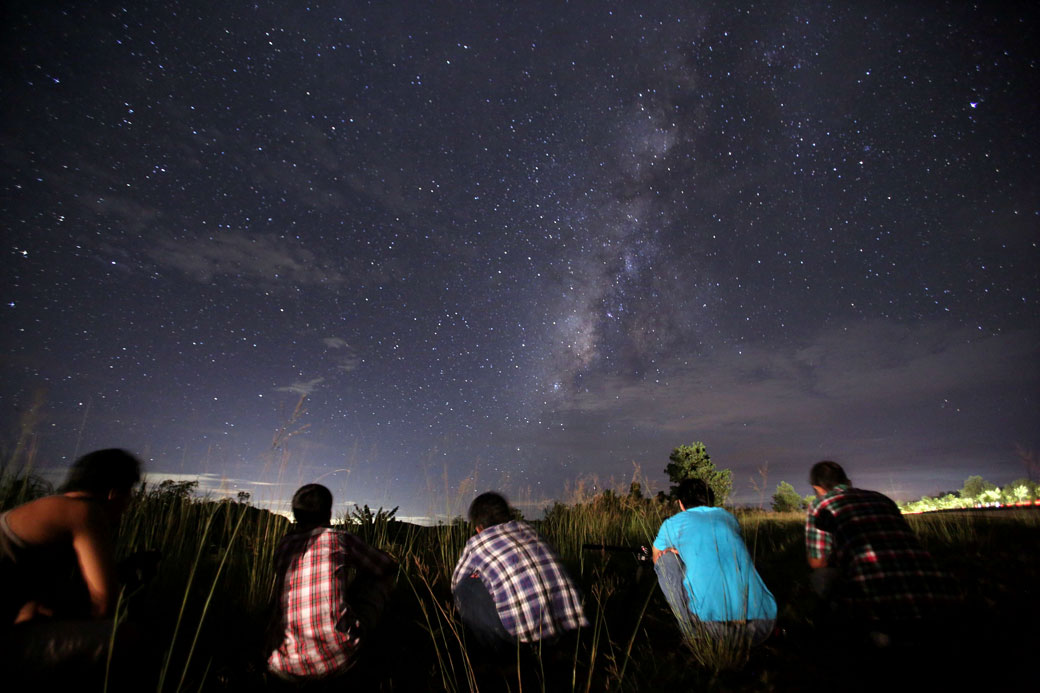TORONTO – We don’t want to think about it, but August is around the corner and before you know it, it’ll be back-to-school time.

So how can you make the most of your remaining summer? Here are some fun science activities you can do with the family, or even just on your own.
1. Go to a star party — or host your own
There are several star parties across the country each summer.
In Ontario, there’s the North York Astronomical Association’s Starfest, the biggest in the country. It runs from August 13-16 and allows people to camp under the stars for several days. There is also the Saskatchewan Summer Star Party, the Mt. Carleton Star Party in New Brunswick and the Nova East Star Party in Nova Scotia on the same weekend.
But beware: this isn’t a place where you can have a campfire or use flashlights: it’s strict lights out (or red lights, as they don’t interfere with your night vision as much).
READ MORE: International Astronomy Day: 5 interesting facts about our universe
If you’re not much for camping or a public star party, hold your own. You can camp out in the backyard, or head to a park for a few hours after sunset to watch the stars. You can teach yourself constellations (or make up your own!), watch satellites passing silently in the sky, or look out for meteors.
For more information on star parties hosted by the Royal Astronomical Society of Canada, click here.
2. Watch the Perseid meteor shower
This is one of the best meteor showers of the year.
The annual Perseids, which take place from July 13 to Aug. 26 produces about 100 meteors per hour at its peak.
The great part is that this year the shower occurs during new moon (or almost new moon), so the moonlight won’t interfere with faint meteors.
How to watch them? If you have clear skies, just head out to a dark sky — if you can — grab a lawn chair or blanket and lie down and just look up. No telescope or binoculars required. And remember to dress warmly as the nights can be a bit chilly.
3. Search for fossils
With all the new dinosaur species being uncovered in Canada lately, you can try to have a go at it, too.
While you may not necessarily discover a new dinosaur, you might be surprised with what you can find.
There are a lot of ways you can find fossils. Walk along any rocky shore and sift through rocks to find hints of past life that once roamed our planet. One of the most abundant fossils is the trilobite an ancient arthropod that was the first dominant form of complex life on our little planet. These little guys had hard exoskeletons and had already developed pretty impressive eyes. They were found about 500 million years ago.
The Courtenay Museum is a fantastic resource for fossil sites.
4. Check out a local science centre or museum
Okay, we might not get perfect weather all summer, so on those rainy days — or on those unbearably hot days — why not head to a local science centre?
In Ontario, you can head to Science North, the Ontario Science Centre or the Royal Ontario Museum. Each one has special interactive summer programs for children.
There’s also the Saskatchewan Science Centre in Regina, the Telus World of Science in Edmonton as well as Telus Spark in Calgary.
In Alberta, you can check out the world famous Royal Tyrrell Museum, home to some of the world’s best dinosaurs. They also have interactive programs such as a dinosaur dig, fossil casting and more. You can also visit the badlands in Drumheller and see the famous hoodoos.
In British Columbia, there’s the H.R. MacMillan Space Centre, and Science World in Vancouver.
5. Visit an observatory
Think observatories are just populated by quiet, geeky astronomers? Not so.
There are quite a few observatories across Canada that open their doors to the public.
In Quebec, there’s the Mont Megantic Observatory, in Mont-Mégantic National Park.
North of Toronto, the David Dunlap Observatory, run by the Royal Astronomical Society of Canada, Toronto Centre, opens its doors at night throughout the summer. You can look through Canada’s largest telescope or gaze through members’ telescopes on the lawn, or enjoy a talk by a professional astronomer.
The University of Toronto also has public lectures and tours, as does York University.
In Victoria, B.C., the Royal Astronomical Society of Canada, Victoria Centre, also runs public programs during the summer. This is Canada’s second-largest telescope.
Honourable mention: Sept. 28 lunar eclipse
While this occurs a week after summer’s end, you don’t want to miss Canada’s second lunar eclipse of the year.
On Sept. 28 the moon will pass through Earth’s shadow, and once again the eclipse will be seen across the entire country.
It will be seen in its entirety from Winnipeg to St. John’s, Newfoundland. In the west it will be seen as the moon rises.






Comments